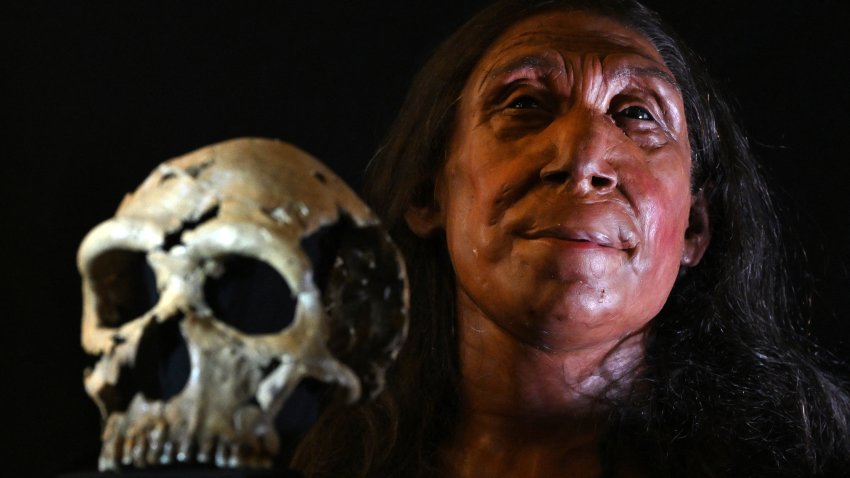-

Is the sky extra blue in fall?
Before we can understand why the sky looks bluer in the fall, it’s important to first know why the sky appears blue in the first place.
-

Things to do this weekend: The Natural History Museum's new wing takes flight
It’s gnice to finally see Gnatalie the Green Dino and all of the wonders of the NHM Commons.
-

Cool activities rule the free PST Art + Science Family Festival
Head to the La Brea Tar Pits for three days of art, music, and science.
-

Could a monkey write Shakespeare before the universe dies? New research questions old theorem
The Infinite Monkey Theorem is “grossly misleading in the real world,” one of the Australian mathematicians behind a new study questioning the age-old maxim told NBC News.
-

Smithsonian displays 1st humanoid robot to go to the International Space Station
NASA is no stranger to spacefaring robots. But “Robonaut 2,” the first human-shaped robot to fly to the International Space Station, is something special. The robot is now on display at the Udvar-Hazy center in Virginia.
-

The science behind why people think they're right when they're actually wrong
There may be a psychological reason why some people aren’t just wrong in an argument — they’re confidently wrong.
-

What's behind the northern lights that dazzled the sky farther south than normal
NOAA issued a severe geomagnetic storm alert on Wednesday after an outburst from the sun was detected earlier in the week. Here’s why they were visible in many parts of the U.S.
-

Nobel Prize in chemistry awarded to 3 scientists for work on proteins, building blocks of life
The Royal Swedish Academy of Sciences has awarded the Nobel Prize in chemistry to David Baker, Demis Hassabis and John Jumper for their work with proteins.
-

‘BāKIT Box' turns the kitchen into a classroom for a sweet science lesson kids will love
Bake yourself brilliant with California Live correspondent Laila Muhammad as she meets the woman behind a unique subscription service for kids: BāKIT Box. Learn how the interactive activity teaches STEM basics to curious young minds of all age
-

Earth's orbit is getting a new moon. Here's what that means
A new moon will be pulled into Earth’s orbit by the end of September, but it won’t stay there forever. Here’s why.
-

NHM Commons, the new Natural History Museum wing, gets its opening date
The airy addition will open just ahead of Thanksgiving; Gnatalie the Green Dino will debut, too.
-

Join a free sloth soirée at the La Brea Tar Pits
The La Brea Tar Pits Museum is throwing it way, way, way back at the vibrant celebration.
-

Perseid meteor shower, one of the most dramatic of the year, is underway
One of the best meteor showers of the year is underway, offering a chance to see shooting stars in the summer night sky.
-

Temple City teens get ready for solar car race in Texas
Temple City High School students are testing their solar-powered vehicles that they built from scratch for the Solar Car Challenge. Tracey Leong reports for the Today In LA at 6 a.m. on Friday, July 5, 2024.
-

Southern California teens to compete in solar-powered car race in Texas
High school students from Southern California prepared to compete in an annual solar-powered car race with cars they designed and built.
-

The world's oldest wine has been discovered with an unexpected extra ingredient — a man's ashes
Although the liquid has a reddish hue, chemical analysis established that “the wine contained in the urn was white,” according to new analysis published this week.
-

Saur-iously cool: The Natural History Museum needs your help in naming a new dino
The green-boned sauropod — yes, green bones — will debut at the Exposition Park science institution later this year.
-

New research explores how a short trip to space affects the human body
NASA and others have long studied the toll of space travel on astronauts, including yearlong residents of the International Space Station, but there’s been less attention on space tourists.
-

Northern lights put on a show during geomagnetic storm
A severe solar storm led to beautiful views of the northern lights Friday.
-

Face of a 75,000-year-old Neanderthal woman revealed by scientists
The reconstructed face is closer than expected to that of modern-day humans, meaning it’s “perhaps easier to see how interbreeding occurred,” experts said.

